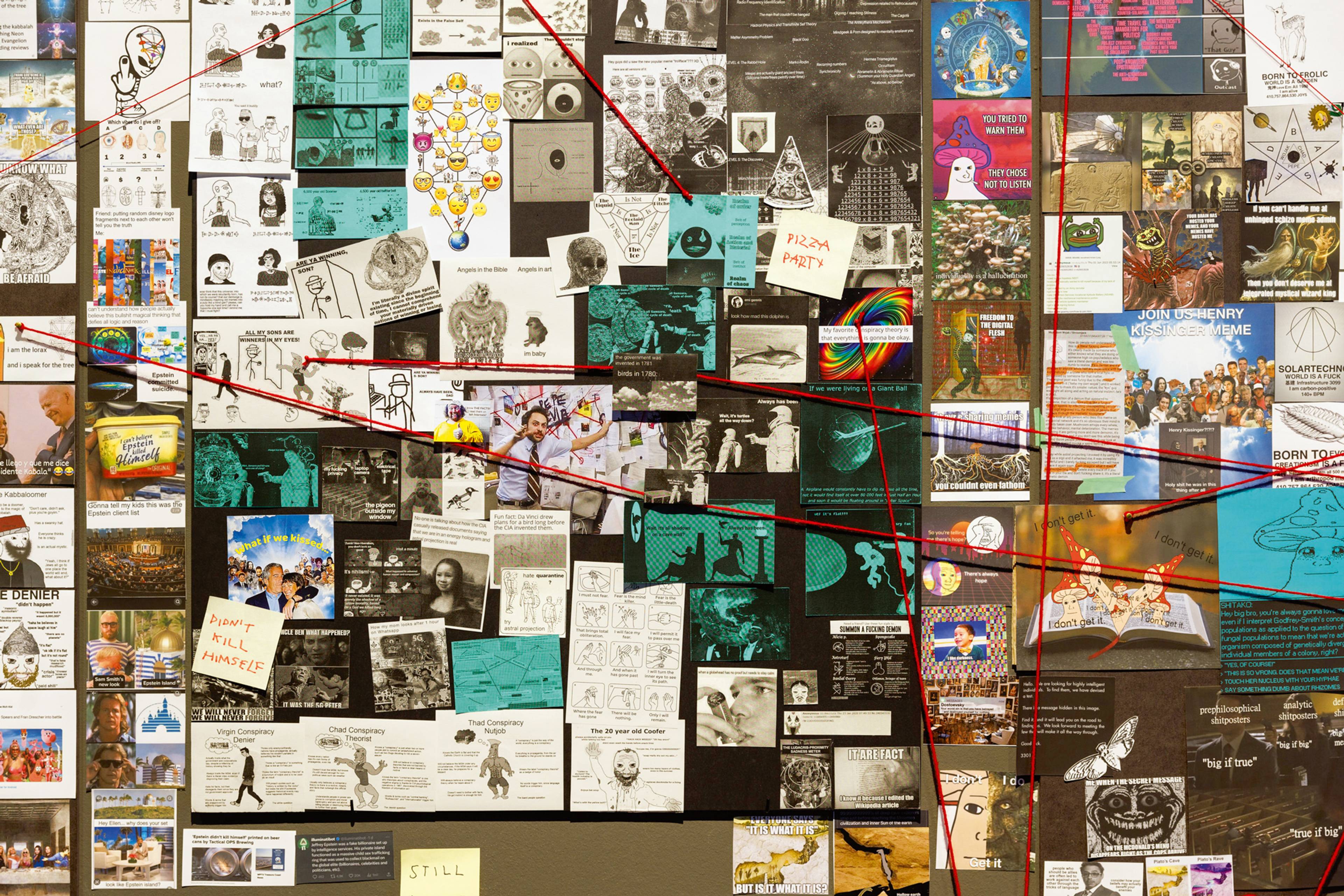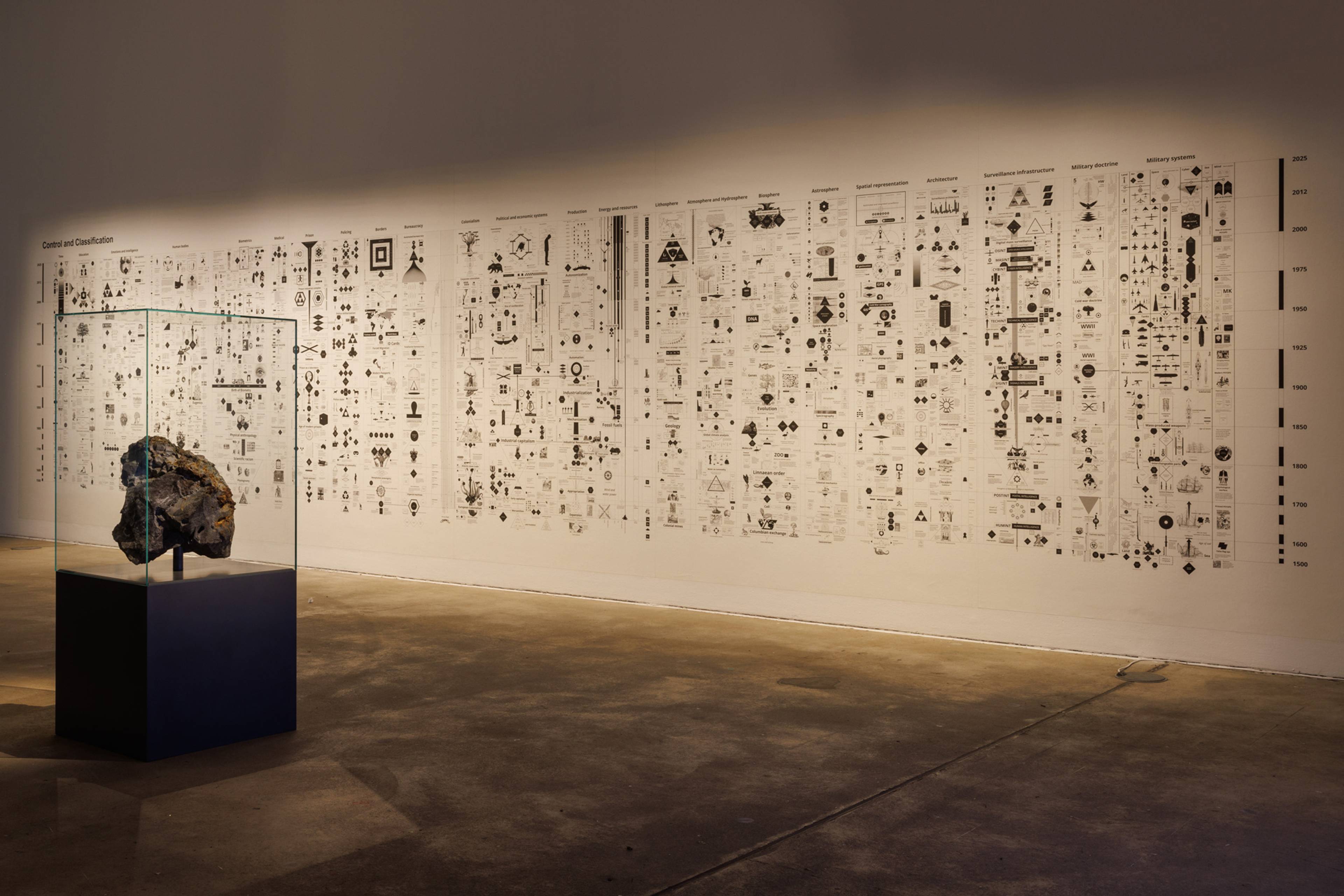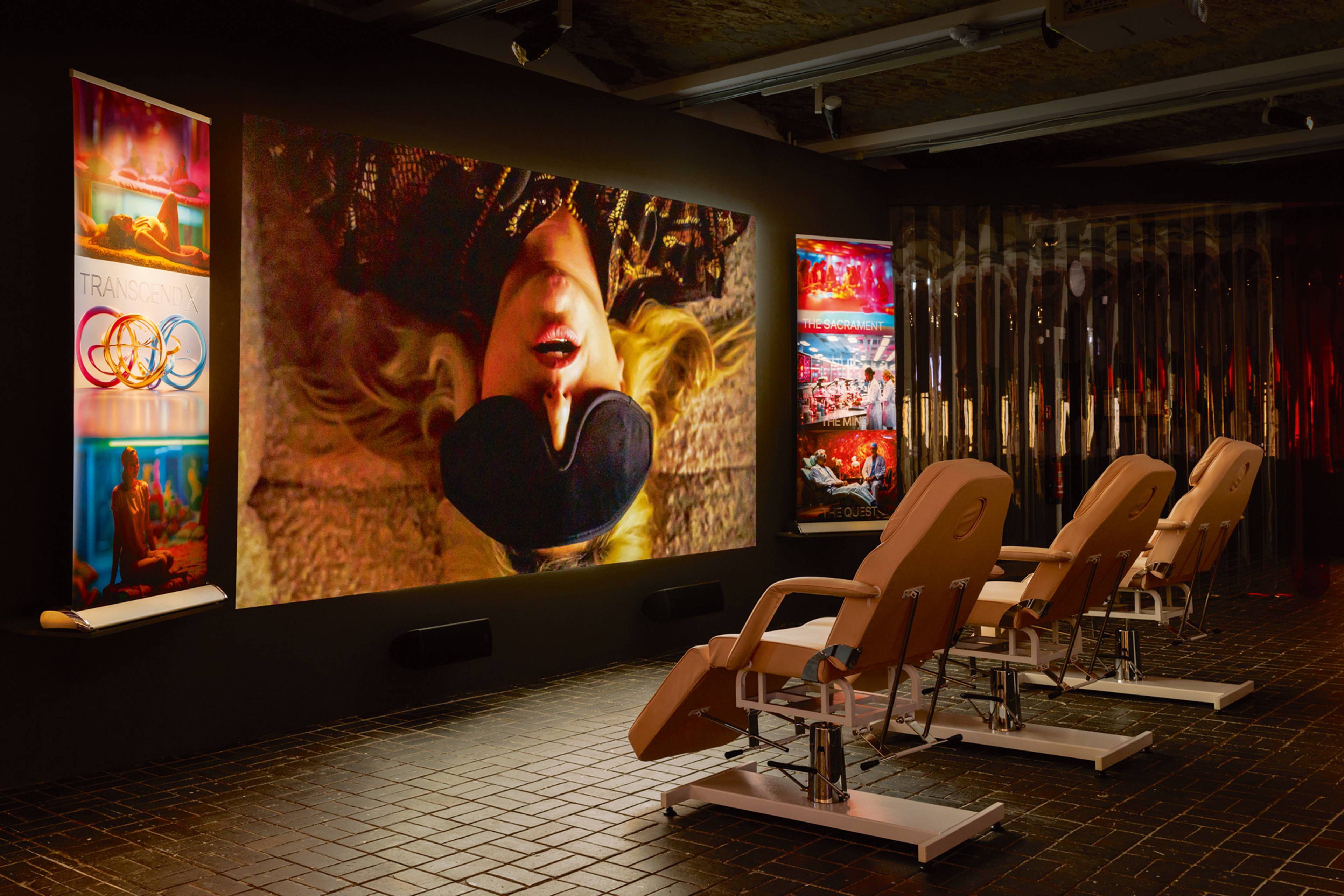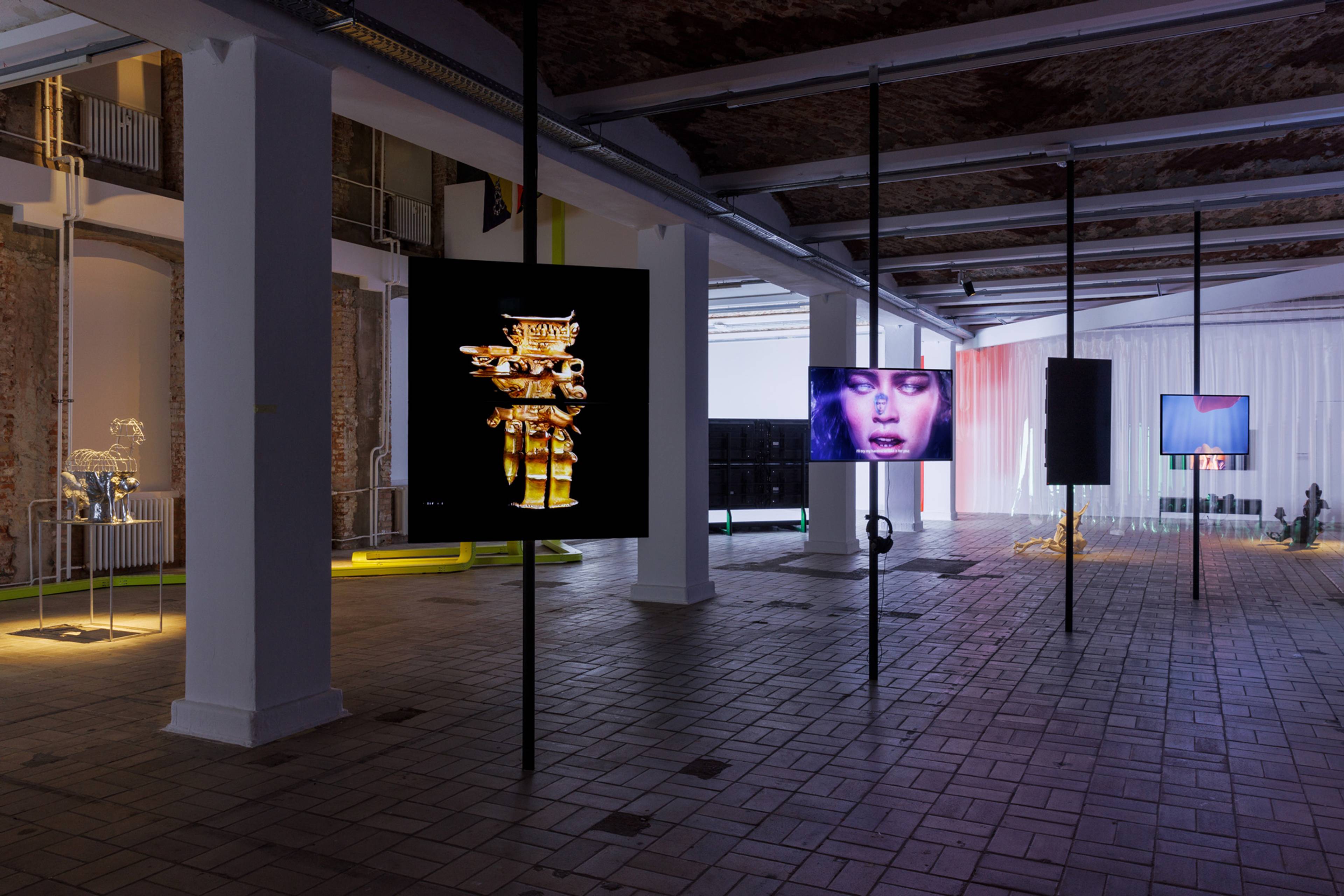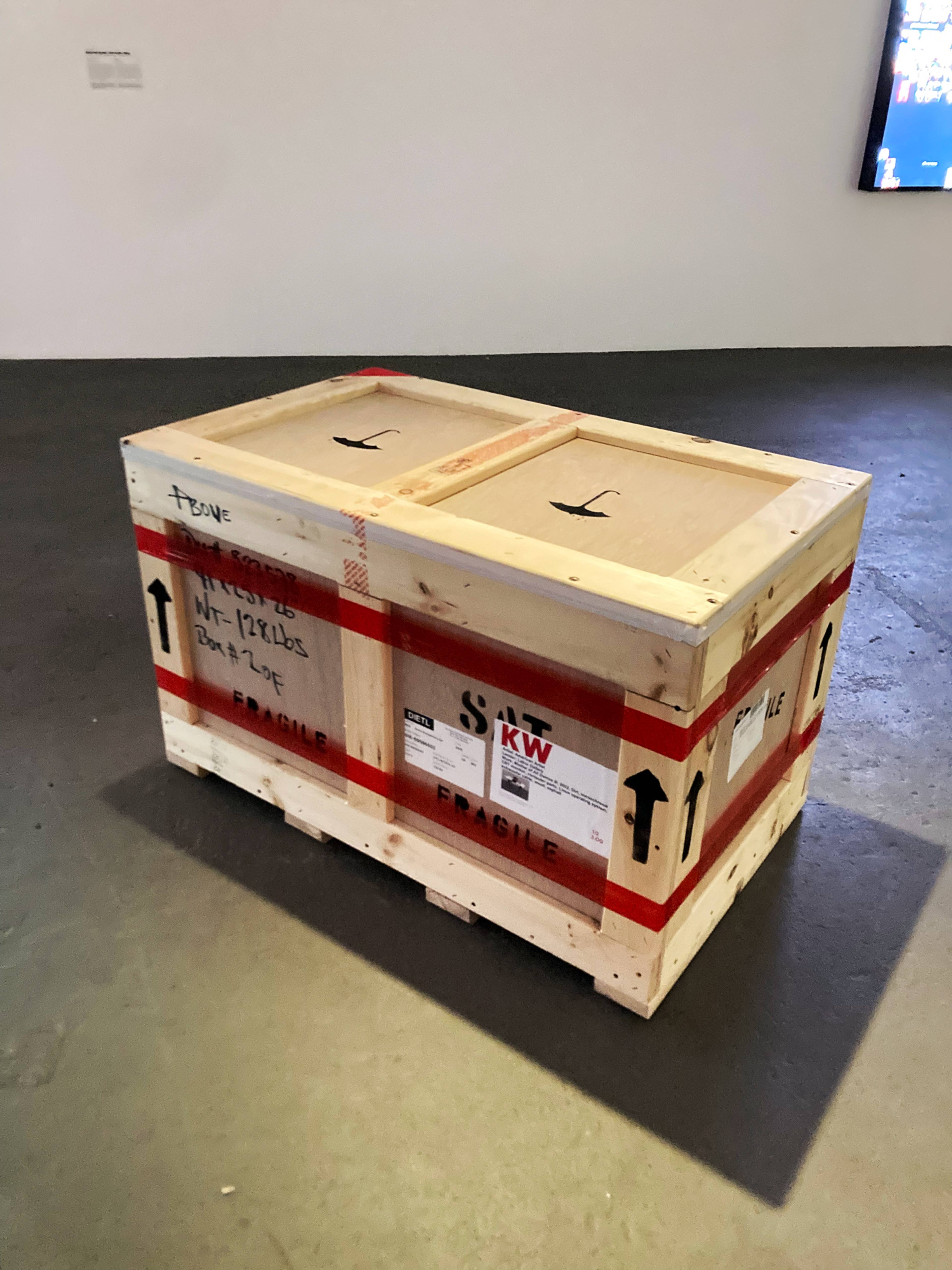The concept of opacity has been gaining traction in the humanities in recent years, from an Édouard Glissant-inspired refusal to make cultural difference fully intelligible to the Western eye, to queer studies’ anti-identitarian opposition to locating the truth in the subject’s desire. The constitutive inability to properly decipher an object is also present in the philosophy of technology, where authors like Luciana Parisi problematize the reading of computation as reductive of human thought, and instead explore those phenomena that, while “incomputable,” nevertheless produce their own idiosyncratic reasoning – for example, unpredictable randomness internal to algorithmic processing.
The extensive exhibition “Poetics of Encryption,” curated by Nadim Samman, features around forty artists and attempts to provide an aesthetic response to those “inscrutable systems” that forestall deeper insight, be it in the form of overwhelming sublimity, conspiratorial obsession, or impotent resignation. Some artworks deal with the curatorial prompt rather bluntly, as where Carsten Nicolai’s sound-emitting black monolith sculpture Anti (2004) deprives us of the voyeuristic pleasure of peering inside. Others are more generative, such as Kate Crawford and Vladan Joler’s Calculating Empires (2023), a 24-meter-long map rhizomatically charting the longue durée of technologized power since 1500. From the transatlantic slave trade and Weberian bureaucracy to contemporary machine-learning, the map’s attempt to grasp the complex totality of (ab)uses of technology might feel frustratingly sublime, but its taxonomy is helpful in decoupling tech, particularly AI, from psychosocial anxieties about the corrupting effects of artificiality and automation and link them to earth-bound forms of extraction and human labor. Despite its instructional value, such demystificatory works can perhaps be filed under what art historian Larne Abse Gogarty has called the “info-optimism of legibly political art,” acts of didactic transparency asserting that agency diminished by technological innovation can be restored by knowing more, knowing better.
Julian Charrière, Metamorphism XIII, 2016 (front) and Kate Crawford & Vladan Joler, Calculating Empires, 2023 (behind). Installation view, KW Institute for Contemporary Art, Berlin, 2024. Photo: Frank Sperling
View of “Poetics of Encryption,” KW Institute for Contemporary Art, Berlin, 2024. Photo: Frank Sperling
If Crawford and Joler’s map doesn’t flee the terrain of the conspiratorial, but engages it from a politically progressive point of view, one stumbles in the KW stairwell upon a poster installation of diagrams purchased from the website of Dylan Louis Monroe, the “map maker” of the right-wing conspiracy movement QAnon. The wall text mentions that he created the Orit-B Codex, an accelerant of the “Great Awakening,” without elaborating that this refers to the “awakening” of individuals to a racist, misogynistic, or antisemitic worldview. One could argue that such material is yet more cognitive mapping of the impenetrable world that exceeds us; or, it might flirt with the aestheticization of fascism under the guise of research-based art. Other works, like Joshua Citarella’s e-deologies (2020–23), a melange of flags with hyper-specific political labels from online subcultures (“Anarcho-Capitalist Voluntarist Pacifism,” “Left Egoist Trans-humanism,” et al), remind us that the horseshoe theory, which postulates the convergence of opposed political ideologies, often gets taken up as a nihilistic visual cue to flatten distinctions between left and right into baroque names and cutified logos.
Fortunately, many works here are more conceptually rigorous, such as Nora Al-Badri’s video The Post-Truth Museum (2021–23), featuring deepfakes of three “white, old, male” museum directors admitting the truth about their collections’ imperial plunders. In The Brutish Museum (2020), archaeologist Dan Hicks argues that the looting of colonial artifacts was central to creating national identities and aesthetics, not just a “soft” byproduct of imperialist accumulation. Rather than use AI-generated characters for their wow factor or to paranoically comment on digital verisimilitude, Al-Badri has ventriloquized these representatives of their respective states to show their “threatened status as guardians of legitimate interpretation and representation.”
Andrea Khôra, Rapture, 2024, video, sound, 24:10 min., medical chairs, roller banners. Installation view, KW Institute for Contemporary Art, Berlin, 2024. Courtesy: the artist. Photo: Frank Sperling
View of “Poetics of Encryption,” KW Institute for Contemporary Art, Berlin, 2024. The dark screen (second from right) marking the withdrawal of Morehshin Allahyari’s work. Photo: Frank Sperling
In Andrea Khôra’s film Rapture (2024), we see an unnervingly persuasive CEO of a psychedelic startup, “TranscendX,” peddling the life-changing effects of hallucinogens in the workplace and beyond. Interspersed with AI-generated sequences that accentuate its psychedelic appeal, the film sardonically portrays technology as a special kind of mediation that, paradoxically, serves to bring us (back) to a certain sense of “immediacy.” In the film, the authenticity that technology promises is dissimilar to neither that of mind-altering substances, nor to the equation of work and meaning. As such, it is also endlessly deferred, so that we never really achieve that sense of lasting satisfaction.
The compulsion to understand often leads to the endowment of technologies with spiritual, fetishized properties. “Poetics of Encryption” cleverly comments on the way we deal with what Freud called our “auxiliary organs,” black boxes that remain alien despite their ubiquity, but perhaps the most glaring omission, is one that should be the least opaque: namely, the withdrawal of Morehshin Allahyari and American Artist as part of STRIKE GERMANY. While acknowledging their absence, the KW has left in place remnants of their intended contributions – wall tags, the unused screen, an unopened shipping crate – the clarity of their gesture inadvertently doing some work on behalf of the curatorial thesis. Moreover, the exhibition omits that they have withdrawn from a state-funded show in protest of the German government’s complicity in the genocide in Gaza – a site of world-historic proportions that has made reality all the more brutally transparent.
The unpacked work of American Artist at “Poetics of Encryption,” KW Institute for Contemporary Art, Berlin, 2024. Photo: Spike
___
“Poetics of Encryption”
KW Institute for Contemporary Art, Berlin
17 Feb – 26 May 2024


